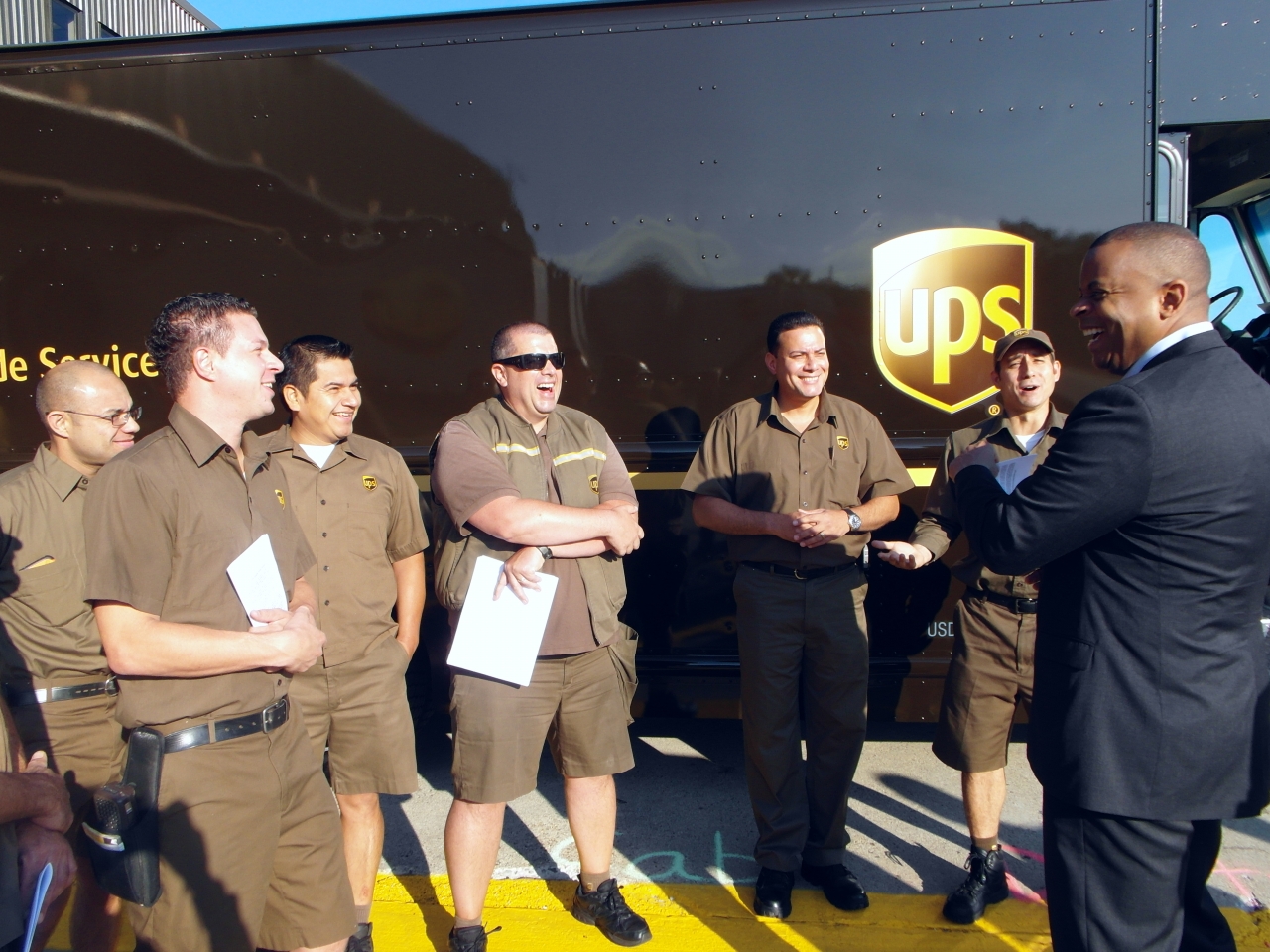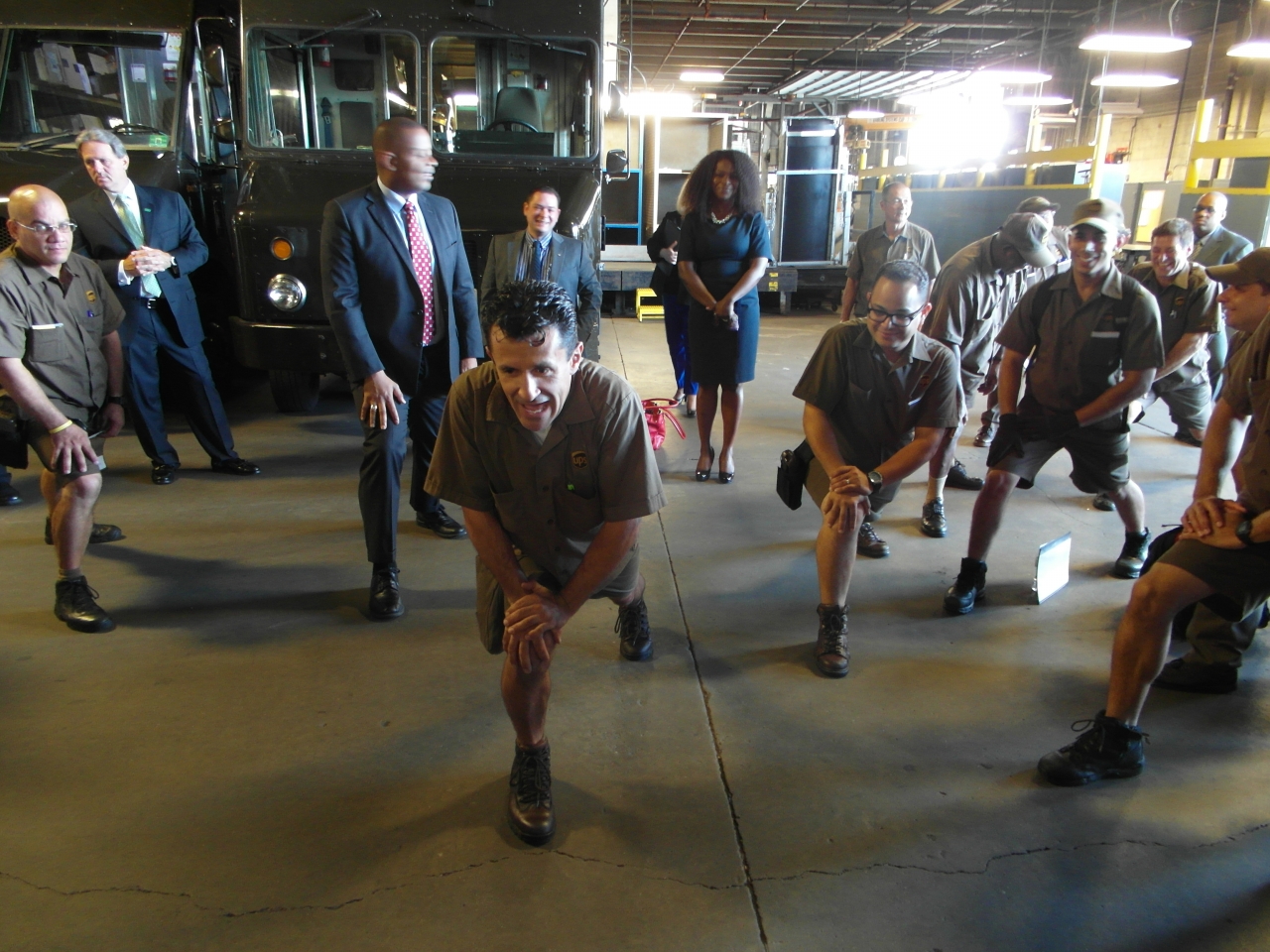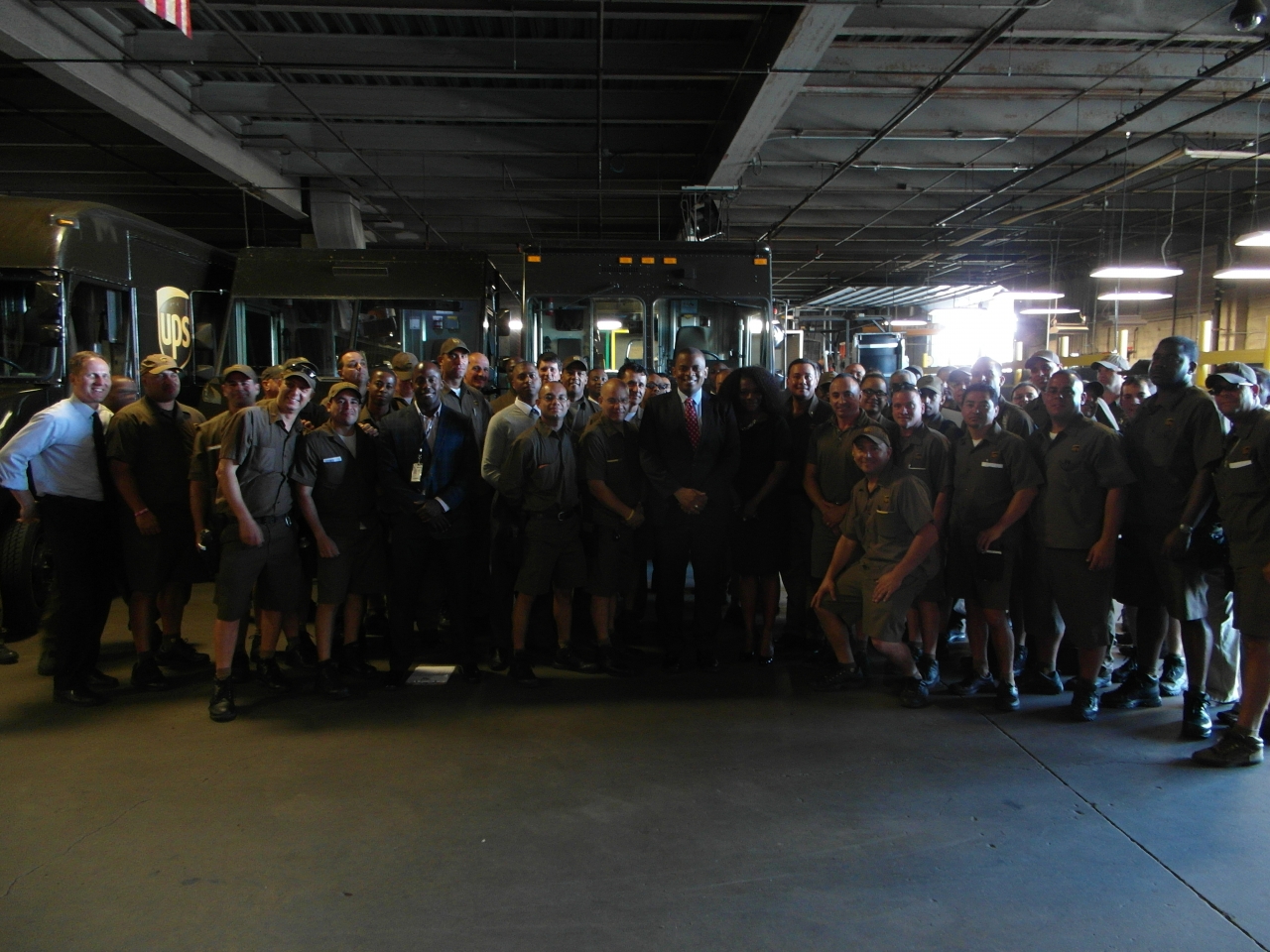
Ed. note: This is cross-posted on the U.S. Department of Transportation's blog. See the original post here.
Like many Americans, when Jesus "Jay" Valentin – a UPS driver – goes to sleep at night in his New Jersey home, he's got a lot on his mind.
He thinks about tomorrow's deliveries and worries about what the traffic will be like and what the weather will mean for road conditions. He calculates how much next month's mortgage payment will leave his family – his wife Jenny and four kids – for savings. He wonders how he will pay for his daughter Tiffany’s college education – she’s 16 now and thinking toward the future.
Last Friday, I had the chance to meet Jay and some of his coworkers at the UPS hub in Secaucus, New Jersey. It was an eye-opener in many ways.
Since I read last month about President Obama's visit with Rebekah, a mom in Minneapolis who had written the President about her day-to-day struggles, I've had a visit with those who depend on a reliable, safe, and efficient transportation system in mind.
It's particularly important to me because I've been fighting so hard to get Congress to pass a long-term transportation funding bill; I wanted to connect with the people I'm fighting for to see exactly what's at stake for their everyday lives. For Jay and his colleagues, delivering packages for UPS on time to your doorstep or office means highways can’t be crumbling, choked with traffic, or full of potholes.
Jay began working at UPS when he was a single dad with a 4-year-old. He was on his way to apply for a job in a grocery store, when he ran into a friend who suggested he look into UPS. Twenty-four years later, he's still there...and thriving.
While at UPS, I was particularly impressed by the safety preparation I saw. Even before they hit the road with the freight that helps keep American businesses and households going, several drivers are on computers taking safety assessments that Jay oversees.
Then there are the loaders, generally young employees who sort thousands of packages onto the 50-60 vehicles in use each day. That's no picnic, believe me.
After a morning meeting with 50 or so drivers and a handful of management staff, where notes on the day get distributed, drivers do some basic exercises and stretches together. As the photo below will attest, most of them are in a little better shape than I am. Jay, who has chaired the facility's Health and Safety Committee for seven years, says that's no accident. After all, it's a long day of constant jumping from behind the wheel to the back of the truck to America's front doorsteps and back behind the wheel to fight traffic on area roads as they navigate to the next delivery address. If you don't pay attention to your wellness, he says, "You won't last five years."
Finally there's Jay's pre-trip safety check of the vehicles – loads balanced, tires properly inflated, lights and flashers working, rear door secured, no leaking fluids – before he and his colleagues depart for their routes – priority packages come first, of course, with that 10:30 a.m. deadline looming.
At 9 a.m., making their way along area highways is not easy. With the main arteries congested by drivers heading into New York City, Jay sticks primarily to local roads as he makes his deliveries. It's a route he's driven for 18 years. And he's seen the roads get worse and worse with constant patchwork repairs to aging roads that simply cannot keep up with today’s traffic demands. And with 100 million more people expected to call the United States home in the next 35 years, without a long-term investment now, these conditions won’t get any better.
It's the kind of deterioration we could reverse if Congress would pass a long-term transportation bill like the GROW AMERICA proposal we sent to Capitol Hill last May. According to UPS, if every one of their trucks were stuck in five minutes of traffic, it would cost the company $100 million. And that doesn't account for the cumulative impact on drivers. As Jay said:
The traffic is stressful. In the morning, we sometimes leave the hub later because the trucks haven't been loaded yet. Then, after you finally leave, you hit the traffic. Now, you can't service your Next Day Airs in time for the deadline; I really can't take a deep breath until I deliver the last NDA package.
He also hates it when roads are in poor condition:
UPS spends a lot of money on costs related to road condition, like maintenance and even injuries to drivers. One driver ran over a pothole and hurt his ankle. Because of the roads, we break springs and suspensions and many other parts. It's awful.
Investing more in maintaining our roads and bridges and building new capacity – the kind of investment GROW AMERICA includes – would allow Jay and his coworkers to make their daily runs with fewer delays and fewer risks to truck and driver.
After all, the most important stop of the day according to Jay? "Your last one – when you get home safely to your family."
I couldn't have said it better myself.
Thanks, Jay, for sharing with me a little bit of what you do and for reminding me who DOT is fighting for.







